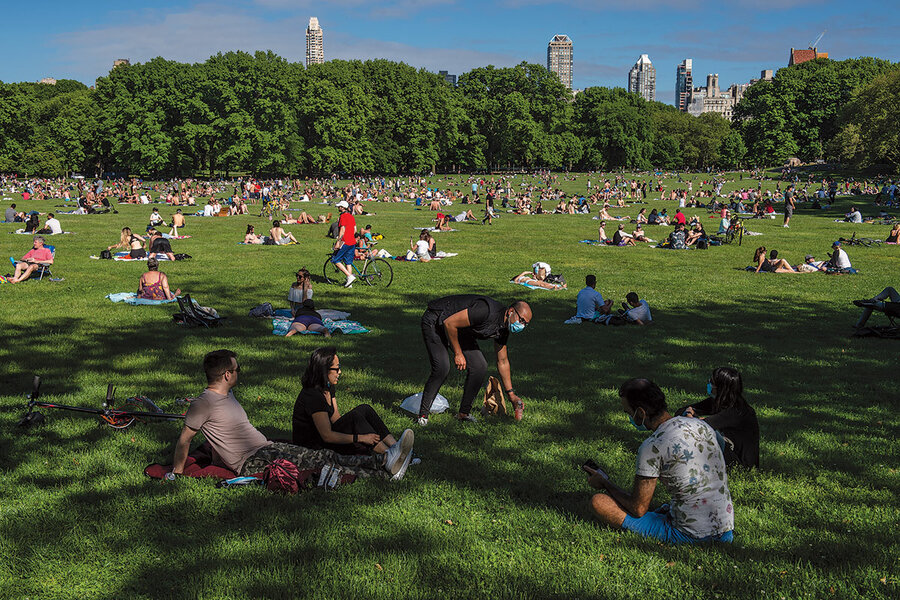What is the point of a city?
Loading...
For all of our lives, cities have been, well, cities. Skyscrapers, chockablock neighborhoods, and good pizza (more or less). But the pandemic has forced us to ask a question that might seem a little strange: What is the point of a city, really?
This is not to say that cities are going away. The world’s trend toward urbanization isn’t likely to let up anytime soon. But the megacities of tomorrow are all expected to be in Asia and Africa. Cities in the West are on a different trajectory, and Harry Bruinius leads a team of Monitor writers exploring these potential changes from New York to St. Louis in a recent cover story.
The answer is universally the same: In the age of Zoom, when white-collar workers are increasingly untethered to the office, cities need to be more than skyscrapers. They need to be livable. In other words, if you can live where you want, then cities need to be a place you want to live.
That trend is not entirely new. More than 20 years ago, I wrote a story about how San Francisco was becoming the prototype for a new kind of city – essentially an urban playground. The pandemic has simply underlined the changes afoot. Not every city has to become its own San Francisco. But it needs to have its restaurants and theaters, green spaces and bike paths. What’s interesting is that through the centuries, public health crises have played important roles in doing just that – making cities more livable.
A 2021 United Nations report notes that during the bubonic plague, Lucca, Italy, required all its residents to clean the street in front of their houses every Saturday. In the 19th century, concerns about tuberculosis in the United States led to a demand for more open spaces. The result was public parks like the Emerald Necklace in Boston and Central Park in New York.
The lesson is the same as it has always been, the report suggests: “The current global predicament underlines the importance of vigilance and the need to ensure that any recovery sustains the benefits of urban health for all in cities and societies that are more inclusive and sustainable.” In other words, the most resilient cities are the ones built with their citizens’ well-being in mind.
It’s a reminder that cities change as societies change. The modern city grew out of the Industrial Revolution, as cities became hubs for mills and factories. The rise of the skyscraper (literally) kept cities at the center of economic activity. But what does that mean when marketers can do their job from the Maine coast, as our cover story explores? It seemingly means that, to prosper, cities must once again find a way to be a better version of themselves.
That constant recalibration brings change, but also a chance for reinvention. As Wired magazine concluded: “The demise of cities is nowhere in sight, even after a global pandemic, but to thrive, they will need to work hard to become liveable, sustainable and inclusive places.”








